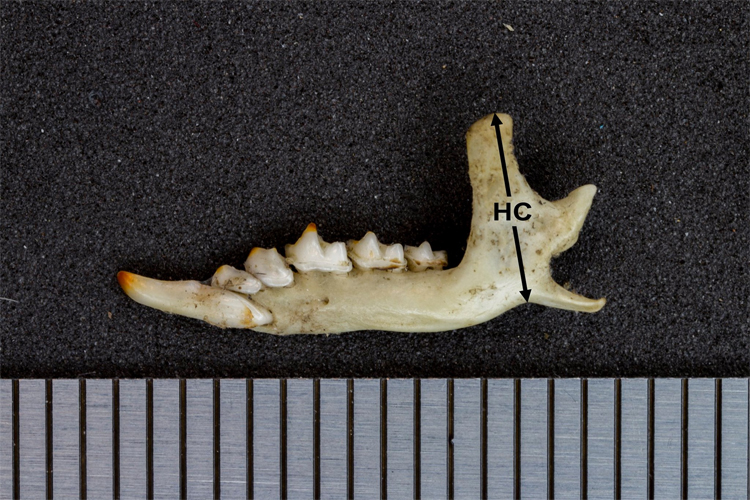When a population shows a marked morphological change, it is important to know whether that population is genetically distinct; if it is not, the novel trait could correspond to an adaptation that might be of great ecological interest. Here, a subspecies of water shrew, Neomys fodiens niethammeri, which is found in a narrow strip of the northern Iberian Peninsula was studied. This subspecies presents an abrupt increase in skull size when compared to the rest of the Eurasian population, which has led to the suggestion that it is actually a different species. Skulls obtained from owl pellets collected over the last 50 years allowed performing a morphometric analysis in addition to an extensive multilocus analysis based on short intron fragments successfully amplified from these degraded samples. Interestingly, no genetic divergence was detected using either mitochondrial or nuclear data. Additionally, an allele frequency analysis revealed no significant genetic differentiation. The absence of genetic divergence and differentiation revealed here indicate that the large form of N. fodiens does not correspond to a different species and instead represents an extreme case of size increase, of possible adaptive value, which deserves further investigation. informacion[at]ebd.csic.es: Balmori-de la Puente et al (2019) Size increase without genetic divergence in the Eurasian water shrew Neomys fodiens. Sci Rep doi:10.1038/s41598-019-53891-y
https://www.nature.com/articles/s41598-019-53891-y

 Las altas temperaturas están provocando que las lagunas y las marismas de Doñana pierdan agua rápidamente
Las altas temperaturas están provocando que las lagunas y las marismas de Doñana pierdan agua rápidamente




